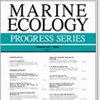Migratory movements, distribution, habitat preference, and activity patterns of the endangered Abbott’s booby Papasula abbotti
IF 2.1
3区 环境科学与生态学
Q2 ECOLOGY
引用次数: 0
Abstract
ABSTRACT: The Abbott’s booby Papasula abbotti is one of the most threatened seabirds in the world. The non-breeding behaviour and distribution of Abbott’s boobies are largely unknown but evidence suggests they migrate between breeding attempts. This lack of information impedes the identification and quantification of the threats the birds are exposed to outside of their breeding season. We studied the migratory movements of Abbott’s booby using geolocator-immersion loggers. A total of 22 adult birds were tracked between 2007 and 2014. Analysis of the 27 migratory trips revealed that birds migrated on average 2500 km east of Christmas Island to an area centred around the Banda Sea, Indonesia. The timing of Abbott’s booby migration (from November-December to April) coincides with the Indonesian-Australian monsoon, a period characterised by reversing prevailing winds and decreased regional oceanic primary productivity. The birds’ movements matched the pattern of reversal of the prevailing winds. No birds were recorded on migration between 17 May and 26 October, which suggests that the whole population of adult Abbott’s boobies is on Christmas Island during that period. Migrating Abbott’s boobies spent little time on the water during the day or at night (15%), and individuals preferred waters with a narrow range of sea surface salinity (32.5-34.5 PSU), rugged seafloor topography, and sea surface temperatures above ca. 28°C. Overall, these novel results identify the area within which potential threats, such as interactions with fisheries or effects of climate change on the species’ marine habitats, should be investigated.濒危阿博特鲣鸟 Papasula abbotti 的迁徙、分布、栖息地偏好和活动模式
摘要:阿博特鲣鸟 Papasula abbotti 是世界上最受威胁的海鸟之一。阿博特鲣鸟的非繁殖行为和分布情况在很大程度上不为人所知,但有证据表明它们会在两次繁殖之间迁徙。这种信息的缺乏阻碍了对这些鸟类在繁殖季节之外所面临威胁的识别和量化。我们使用地理定位器-浸入式记录仪研究了阿伯特鲣鸟的迁徙活动。2007 年至 2014 年间,我们共跟踪了 22 只成年鸟。对27次迁徙行程的分析表明,鸟类平均从圣诞岛以东2500公里迁徙到以印度尼西亚班达海为中心的地区。阿博特鲣鸟的迁徙时间(从11-12月到次年4月)与印尼-澳大利亚季风相吻合,这一时期的特点是盛行风向逆转,区域海洋初级生产力下降。鸟类的迁徙与盛行风的逆转规律相吻合。5 月 17 日至 10 月 26 日期间没有鸟类迁徙的记录,这表明在此期间成年阿博特鲣鸟的全部种群都在圣诞岛上。迁徙的阿博特鲣鸟白天或夜间在水面上停留的时间很少(15%),个体喜欢海面盐度范围较窄(32.5-34.5 PSU)、海底地形崎岖不平、海面温度高于约 28°C 的水域。28°C.总之,这些新结果确定了应调查潜在威胁的区域,如与渔业的相互作用或气候变化对该物种海洋栖息地的影响。
本文章由计算机程序翻译,如有差异,请以英文原文为准。
求助全文
约1分钟内获得全文
求助全文
来源期刊

Marine Ecology Progress Series
环境科学-海洋学
CiteScore
5.30
自引率
8.00%
发文量
238
审稿时长
3 months
期刊介绍:
The leading journal in its field, MEPS covers all aspects of marine ecology, fundamental and applied. Topics covered include microbiology, botany, zoology, ecosystem research, biological oceanography, ecological aspects of fisheries and aquaculture, pollution, environmental protection, conservation, and resource management.
 求助内容:
求助内容: 应助结果提醒方式:
应助结果提醒方式:


